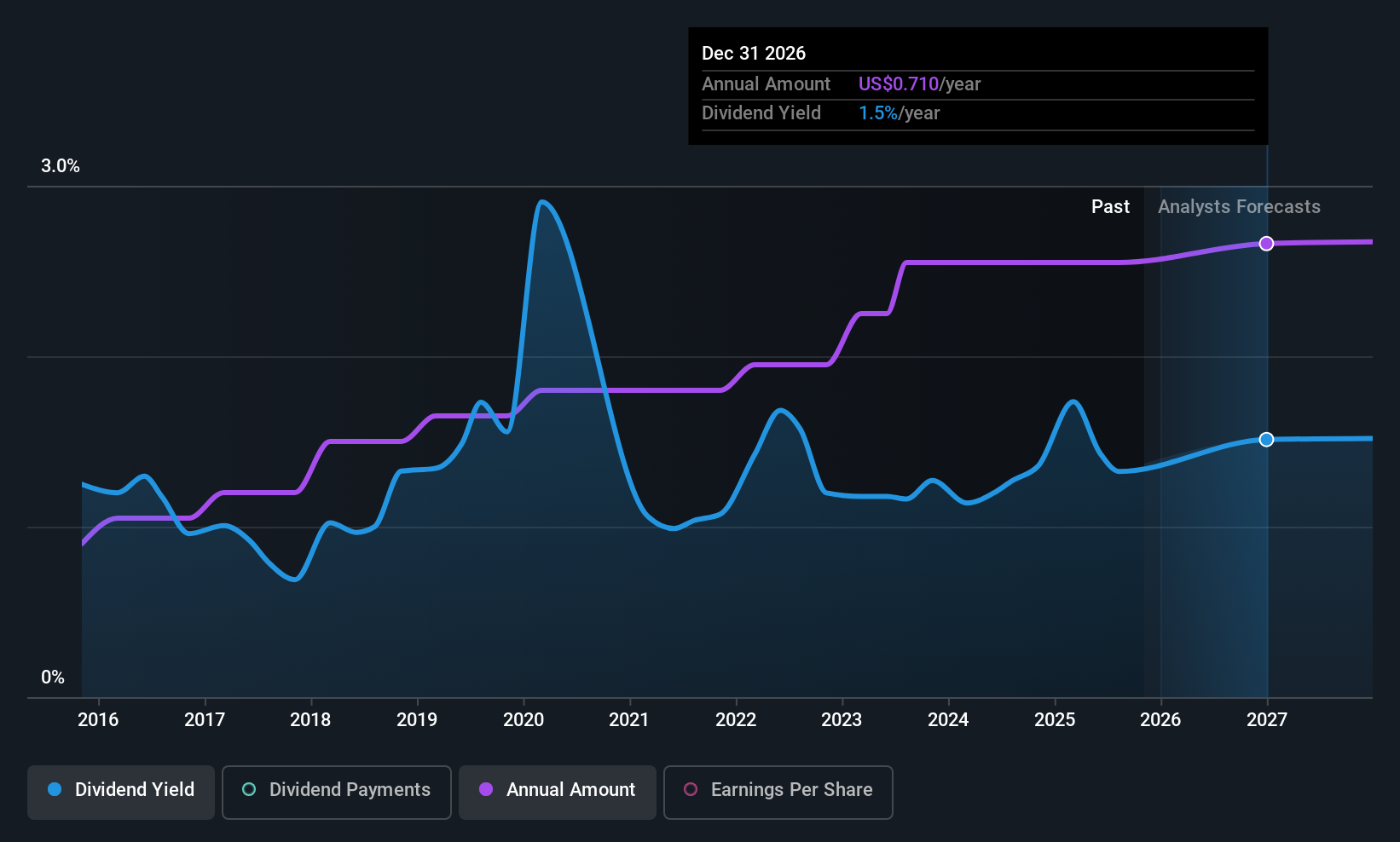- United States
- /
- Machinery
- /
- NYSE:TEX
Terex Corporation (NYSE:TEX) Will Pay A US$0.17 Dividend In Three Days
Some investors rely on dividends for growing their wealth, and if you're one of those dividend sleuths, you might be intrigued to know that Terex Corporation (NYSE:TEX) is about to go ex-dividend in just 3 days. The ex-dividend date occurs one day before the record date, which is the day on which shareholders need to be on the company's books in order to receive a dividend. It is important to be aware of the ex-dividend date because any trade on the stock needs to have been settled on or before the record date. Thus, you can purchase Terex's shares before the 10th of November in order to receive the dividend, which the company will pay on the 19th of December.
The company's upcoming dividend is US$0.17 a share, following on from the last 12 months, when the company distributed a total of US$0.68 per share to shareholders. Based on the last year's worth of payments, Terex has a trailing yield of 1.4% on the current stock price of US$46.95. Dividends are an important source of income to many shareholders, but the health of the business is crucial to maintaining those dividends. We need to see whether the dividend is covered by earnings and if it's growing.
Dividends are typically paid out of company income, so if a company pays out more than it earned, its dividend is usually at a higher risk of being cut. That's why it's good to see Terex paying out a modest 29% of its earnings. Yet cash flows are even more important than profits for assessing a dividend, so we need to see if the company generated enough cash to pay its distribution. The good news is it paid out just 16% of its free cash flow in the last year.
It's positive to see that Terex's dividend is covered by both profits and cash flow, since this is generally a sign that the dividend is sustainable, and a lower payout ratio usually suggests a greater margin of safety before the dividend gets cut.
Check out our latest analysis for Terex
Click here to see the company's payout ratio, plus analyst estimates of its future dividends.

Have Earnings And Dividends Been Growing?
When earnings decline, dividend companies become much harder to analyse and own safely. Investors love dividends, so if earnings fall and the dividend is reduced, expect a stock to be sold off heavily at the same time. So we're not too excited that Terex's earnings are down 4.2% a year over the past five years.
Another key way to measure a company's dividend prospects is by measuring its historical rate of dividend growth. Terex has delivered 11% dividend growth per year on average over the past 10 years.
To Sum It Up
Has Terex got what it takes to maintain its dividend payments? Terex has comfortably low cash and profit payout ratios, which may mean the dividend is sustainable even in the face of a sharp decline in earnings per share. Still, we consider declining earnings to be a warning sign. Overall, it's not a bad combination, but we feel that there are likely more attractive dividend prospects out there.
In light of that, while Terex has an appealing dividend, it's worth knowing the risks involved with this stock. For example, Terex has 2 warning signs (and 1 which is a bit concerning) we think you should know about.
A common investing mistake is buying the first interesting stock you see. Here you can find a full list of high-yield dividend stocks.
Valuation is complex, but we're here to simplify it.
Discover if Terex might be undervalued or overvalued with our detailed analysis, featuring fair value estimates, potential risks, dividends, insider trades, and its financial condition.
Access Free AnalysisHave feedback on this article? Concerned about the content? Get in touch with us directly. Alternatively, email editorial-team (at) simplywallst.com.
This article by Simply Wall St is general in nature. We provide commentary based on historical data and analyst forecasts only using an unbiased methodology and our articles are not intended to be financial advice. It does not constitute a recommendation to buy or sell any stock, and does not take account of your objectives, or your financial situation. We aim to bring you long-term focused analysis driven by fundamental data. Note that our analysis may not factor in the latest price-sensitive company announcements or qualitative material. Simply Wall St has no position in any stocks mentioned.
About NYSE:TEX
Terex
Provides materials processing machinery and mobile elevating work platform worldwide.
Fair value with moderate growth potential.
Similar Companies
Market Insights
Community Narratives



